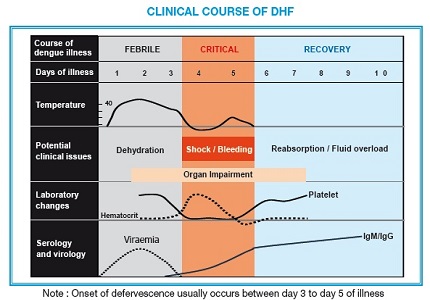Study of use of fluid regulator in the fluid management of dengue fever in children in a rural tertiary care hospital
Abstract
Background: Dengue is the most rapidly spreading mosquito borne viral disease in the world. In the last 50 years incidence has increased 30 folds with increasing geographical expansion to new countries and into present decade, from urban to rural setting.
Objectives: To study the use of fluid regulator in the fluid management of Dengue Fever in children in a rural tertiary care hospital with a good outcome with no mortality.
Material & Methods: This study was conducted on 1537 patients aged (0-16 years) with suspected Dengue Fever and serologically confirmed Dengue fever in the Department of Paediatrics, Akash Hospital , from October 2013 to October 2016. Fluid Regulator (DOSIFLOW) was used in the management of all admitted dengue cases in the pediatric general wards without shifting them to Pediatric Intensive Care Unit (PICU), and without using Infusion pumps. Those with respiratory distress and severe shock requiring ventilator support were shifted to PICU. Otherwise all patients with hypovolemia, severe thrombocytopenia, bleeding manifestation were managed in the pediatric general ward with the help of fluid regulator (DOSIFLOW).
Results: Out of 1537 patients, 41 were case of severe dengue (DHF and DSS), 1496 were cases of non-severe dengue (undifferentiated fever, dengue fever with warning signs, and dengue fever without warning signs). The youngest child was 2 months old. All of the cases needed intravenous fluids. All patients with warning signs, with hypovolemia, severe thrombocytopenia, bleeding manifestations were managed in the pediatric general wards with the help of fluid regulator (DOSIFLOW). Fluid could be adjusted and regulated as 10ml/kg, 7ml/kg, 5ml/kg, 3ml/kg very easily with the help of fluid regulator without the use of infusion pump. Dopamine was required in 2% of cases, all of them were severe dengue cases. Platelet concentrate and Blood transfusion were not given to any of our admitted dengue cases. Case fatality rate was 0%, as all cases were discharged successfully after recovery with fluid management.
Conclusion: Fluid therapy is very important in the management of Dengue fever which requires a fluid regulator for effective administration of intravenous fluids. We recommend to use Fluid regulator (DOSIFLOW) for fluid management of all Dengue Cases and also routinely in all paediatric cases for fluid administration, as it is very easy to use and regulate fluid volume without causing fluid overload.
Downloads
References
2. WHO. Comphrensive Guidelines for Prevention and Control of Dengue and Dengue Hemorrhagic Fever. Revised and expanded edition. 2011.
3. Gupta N, Srivastava S, Jain A, Chaturvedi UC. Dengue in India. Indian J Med Res. 2012 Sep;136(3):373-90. [PubMed]
4. Das B, Das M, Dwibedi B, Kar SK, Hazra RK. Molecular investigations of dengue virus during outbreaks in Orissa state, Eastern India from 2010 to 2011. Infect Genet Evol. 2013 Jun;16:401-10. doi: 10.1016/j.meegid.2013.03.016. Epub 2013 Mar 22.
5. Special Programme for Research, Training in Tropical Diseases and World Health Organization, Dengue:Guidelines for Diagnosis, Treatment, Prevention and Control, World Health Organization, Geneva, Switzerland, 2009.
6. Rigau-Pérez JG, Clark GG, Gubler DJ, Reiter P, Sanders EJ, Vorndam AV. Dengue and dengue haemorrhagic fever. Lancet. 1998 Sep 19;352(9132):971-7. [PubMed]
7. Dengue Fact sheet. WHO SEARO. December 2014.
8. Ghosh SK, De S, Sarkar U, Ghosh M, Chaterjee MK, Samanta S. Clinical profile of dengue during 2005 outbreak in kolkata and predictive markers in dengue hemorrhagic fever. J Indian Med Assoc 2011 Nov ;109(11):790-93. [PubMed]
9. World Health Organization. Dengue : Guidelines for Diagnosis, Treatment, Prevention and Control. Geneva, Switzerland: WHO, 2009.
10. World Health Organization. Dengue Hemorrhagic Fever: Diagnosis, Treatment, Prevention and Control, 2nd Edn. Geneva, Switzerland: WHO, 1997.
11. Hung NT, Lan NT. Improvement of case-management a key factor to reduce case-fatality rate of dengue hemorrhagic fever in Southern Vietnam. Dengue Bull. 2003; 27:144-48.
12. Manjunath J Kulkarni, Vijay Sarathi, Vikas Bhalla, Deepak Shivpuri, Usha Acharya. Clinico-Epidemiological Profile of Children Hospitalized with Dengue. Indian J Pediatr 2010;77:1103-1107.
13. C V Prathyusha, M SrinivasaRao, P Sudarsini and K Umamaheshwara Rao. Clinico-haematological profile and outcome of dengue fever in children.Int.J.Curr.Microbiol.App.Sci 2013; 2(10):338-346.
14. Jonathan G Lim, Salvacion R, Gatchalian, Ma Rosario Z Capeding. Profile of Pediatric Patients with Dengue Fever/Dengue Hemorrhagic Fever over a Five Year Period (2000-2004). Pediatric Infectious Disease Society of Philippines Journal 2010; 11(1). 26-34.
15. Hemanth Kumar, Saba Mohammed Mansoor. A Study of Clinico-demographic Profile of Dengue Cases in a Teaching Hospital. National Journal of Laboratory Medicine 2015 ;13557:2038.1-5.
16. Norlijah O, Kamarudin NB, Kamarul AR. Clinico Laboratory Profile of Dengue Hemorrhagic Fever in Malaysian Children. Asian Oceanian Journal of Pediatrics and Child Health.(2004) 3(2).
17. Ratageri VH, Shepur TA, Wari PK, Chavan SC, Mujahid IB, Yergolkar PN. Clinical profile and outcome of Dengue fever cases. Indian J Pediatr. 2005 Aug;72(8):705-6. [PubMed]
18. S.L.Seneviratne, G.N.Malavige, and H.J.de Silva, Pathogenesis of liver involvement during dengue viral infections. Transactions of the Royal Society of Tropical Medicine and Hygiene, 2006;100(7):608-614.
19. Ghosh A, Dar L. Dengue vaccines: challenges, development, current status and prospects. Indian J Med Microbiol. 2015 Jan-Mar;33(1):3-15.
20. Soni A, Chugh K, Sachdev A, Gupta D. Management of dengue fever in ICU. Indian J Pediatr. 2001 Nov;68(11):1051-5. [PubMed]
21. Ranjit S, Kissoon N, Jayakumar I. Aggressive management of dengue shock syndrome may decrease mortality rate: a suggested protocol. Pediatr Crit Care Med. 2005 Jul;6(4):412-9.

Copyright (c) 2017 Author (s). Published by Siddharth Health Research and Social Welfare Society

This work is licensed under a Creative Commons Attribution 4.0 International License.


 OAI - Open Archives Initiative
OAI - Open Archives Initiative


